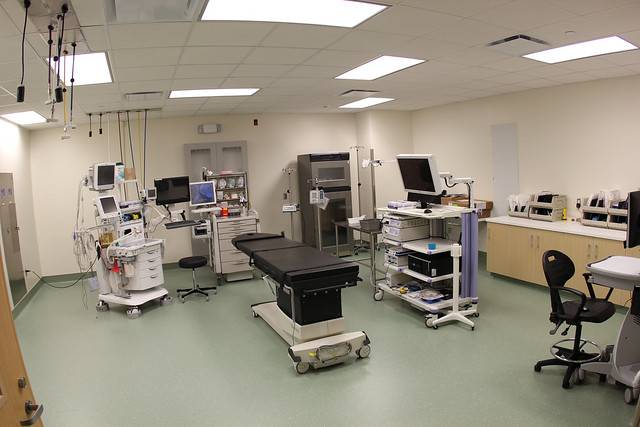
It is through technology that patients are able to gain access to the most cutting-edge medical procedures and treatments. However, with the very low doctor-patient ratio, with WHO member states claiming to have only less than 1 physician for every 1000 population, the need for technology to streamline healthcare systems is something that must be given much attention these days. The reality is that patient care teams have to handle truckloads of patient records and care management tasks. This leads them to tediously go through a multifaceted web of different workflows on a daily basis. Unfortunately, this also increases the risk for decision bottlenecks. Not to mention delayed and missed tasks which may prove to be harmful to patient safety while also adversely affecting the quality of patient care they provide.
But, with the integration of automated processes using high-end technological systems designed for streamlining healthcare management it would become easier to unite doctors, nurses, patients, other hospital staff with all the information and assets all throughout the hospital. Thus, a more efficient healthcare system will emerge.
However, achieving a completely efficient healthcare system does not only entail the adoption of new technology. Hospitals and all the people involved in the healthcare industry must also possess a clear digital strategy that could be implemented across the entire medical and healthcare organizations.
Technological Advancements Currently Adopted in The Healthcare Industry
Cloud-Based EHRs
Cloud-based EHRs do a great job in eliminating the need for local storage and thus also reducing the use of local servers and traditional desktop computer. This enables hospital employees to easily access data and relevant software packages only with the use of small desktop computers. This cloud-based electronic health records provide centralized and simplified system which is not difficult to implement and use. The existence of EHR systems enable the drastic reduction of costs through limited maintenance fees. Also, with these EHRs, licensing and updating costs are also reduced. It also reduces the need for more IT staff because this kind of system does not require constant hardware and software installations. There’s no need for EHRs to be regularly updated and repaired. It also makes adding and expanding the network of users and data easier to do. And since this system is cloud-based patients will also be able to access their own information which is something that is essential for managing their health care insurance.
Claim up to $26,000 per W2 Employee
- Billions of dollars in funding available
- Funds are available to U.S. Businesses NOW
- This is not a loan. These tax credits do not need to be repaid
Smart Phone System
Medical professionals are now embracing the existence of smart phone systems in their offices and healthcare establishments. This smart phone system makes it easier for physicians, and other hospital or clinic staff to answer patient or client calls by quickly routing each call to the person in charge. This smart phone system such as the one from www.getweave.com also makes it easier for healthcare providers to pull up patient information at the moment of the call. Thus, patients don’t have to waste much of their precious time waiting since they will no longer be put on hold for several minutes. With the smart phone system, answers to questions and setting of appointments can be done with so much ease both on the part of the healthcare provider and the patient.
EHR Data Analytics
The use of EHR Data Analytics provide health care administrators the ability to continually mine the data in order to come up with information that is important for improving the efficiency of patient care. This EHR Data Analytics make use of algorithms, coupled with deep search functions to be able to benchmark processes that are currently used. This significantly provides critical insight into the quality of patient care. This also makes it easier for healthcare administrators to streamline workflows in addition to increasing patient satisfaction. EHR Data Analytics also greatly reduce costs as well as wait times. Moreover, Data Analytics play a significant role in changing the healthcare system from being a profit based care to being a value-based care.
The use of EHR Data Analytics largely contributes to making the healthcare organization able to provide high quality service. This is because data analytics make it easier for anyone involved in the healthcare system to come up with financial, clinical, operational and administrative insight.
Mobile Medical Device
The National Institutes of Health (NIH) reveals that the healthcare industry is having difficulties with providing optimal patient care and information. This is due to the fact that the health care staff are often overworked. Besides, they are also mostly understaffed. Thus the occurrence of continual mistakes and cases of miscommunications have also become common. Luckily there are already mobile medical devices that serve as the central go-between for patients, healthcare equipment and professionals providing healthcare. This patient-centric biomedical devices have made patient safety easier to achieve. These wearable mobile gadgets provide unlimited healthcare applications. One example for this is the wearable gadget designed for diabetics that are capable of monitoring blood glucose levels. The same technology is also being developed to provide more capabilities such as the self-administration of insulin. Another example would be the Apple Watch that can be used to measure and monitor fitness, sleep and diet information.
Other Technological Systems Being Used in the HealthCare Industry Today
- Many hospitals are also eliminating distance barriers with the use of telemedicine which is made possible through network and communication technologies. This gives way to a broader access to both specialized and standard care that is not limited to geographical location.
- There are also delivery robots that are designed to handle several fetch-and-deliver tasks and locate staff, patients and equipment in real-time.
- There are also digital medical imaging systems that make the process of reviewing medical images by physicians, as well as other medical professional involved in medical decisions, so much faster and more precise.
- The existence of mobile health (mHealth) initiatives also allow patients and physicians to make use of tablets, smartphones and other mobile devices when recording and finding information anytime and anywhere.
By standardizing procedures with the use of technology, connecting, digitizing and analyzing them will be made less tedious yet more precise. When these automated processes are well understood, the use of technology to streamline healthcare management can help hospitals achieve unprecedented efficiency. However, these systems won’t be realized without first establishing and integrating information and communications technology infrastructure that is capable of interconnecting all the different aspects of hospital administration and care delivery.
Moreover, the use of technology provides caregivers, medical professionals and the healthcare system as a whole a convenient means of providing the best patient care.



